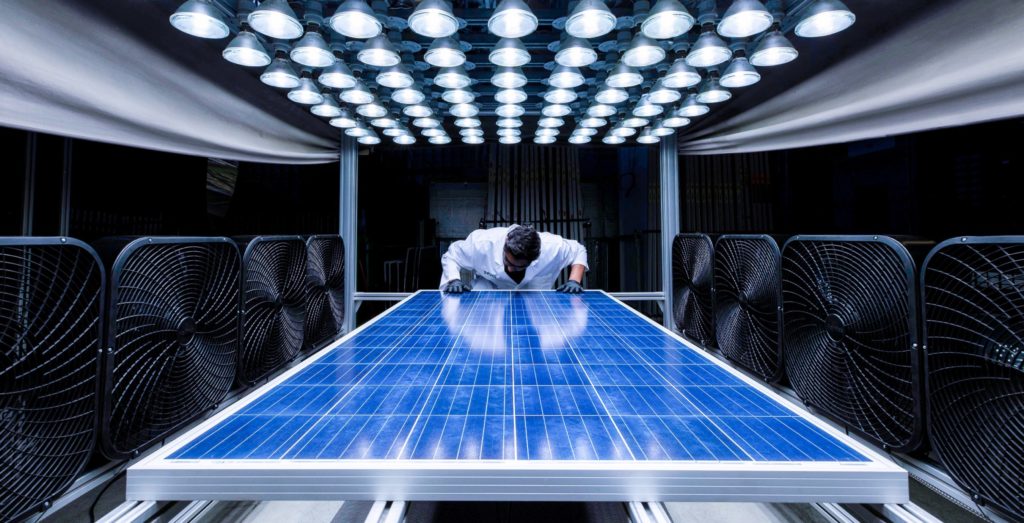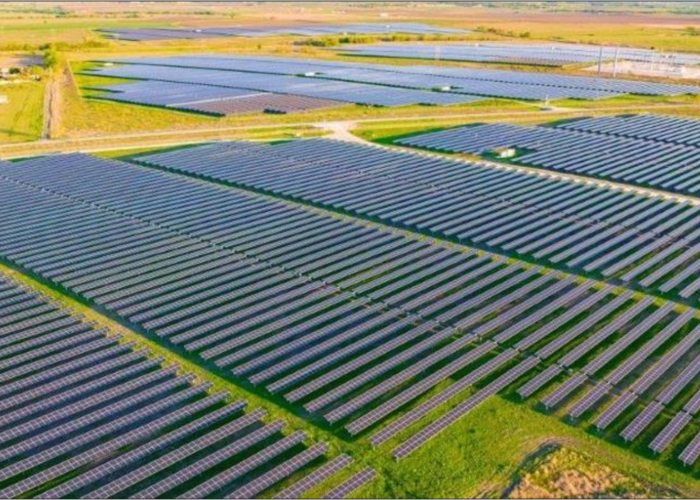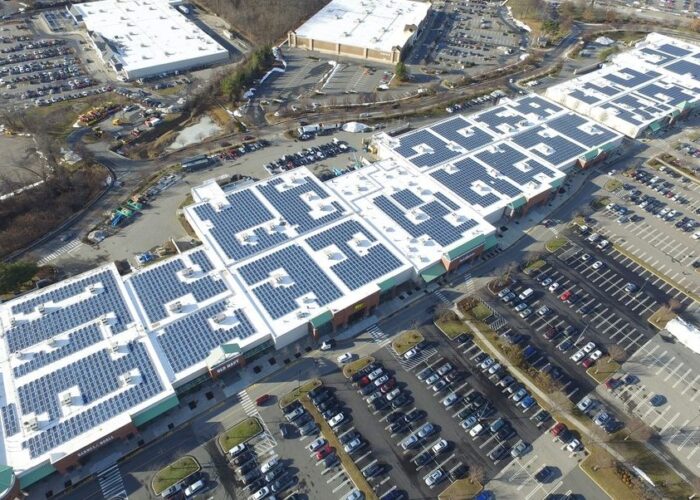
Europe will surpass its 30GW solar PV manufacturing target by 2025 if the right industry and policy conditions are met, according to a report by the European Solar PV Industry Alliance (ESIA).
This projection comes from data the ESIA collected from its members following the Intersolar Europe conference in Munich last week, which showed more than 20 PV manufacturing pipeline projects due to come online across polysilicon, ingot, wafer, cell and module production.
Try Premium for just $1
- Full premium access for the first month at only $1
- Converts to an annual rate after 30 days unless cancelled
- Cancel anytime during the trial period
Premium Benefits
- Expert industry analysis and interviews
- Digital access to PV Tech Power journal
- Exclusive event discounts
Or get the full Premium subscription right away
Or continue reading this article for free
The report emphasised the importance of policy support in achieving the 2025 goal and making Europe’s supply chains competitive with international ones in a landscape dominated by China and Southeast Asia.
ESIA members CARBON and Enel Group have so far announced module production facility plans in France and Italy respectively. According to SolarPower Europe’s PV manufacturing map, Europe currently has 9.4GW of module production capacity, the overwhelming majority of which constitutes small, MW-scale production.
For polysilicon, there are just two producers on the map: Wacker Chemie in Germany and REC Solar in Norway.
There is currently 1.4GW of cell production in Europe, most notably from 3Sun in Sicily and Meyer Burger in Germany, and 1.7GW of combined wafer and ingot capacity.
To reach its 30GW target, the ESIA has established four work groups headed by leading industry players, as part of a roadmap to develop the entire PV value chain. They are focused on non-pricing conditions (demand-side policies), supply chain, financing and skills.
Jörg Ebel, head of public affairs at IBC Solar and Pierre-Emmanuel Martin, CEO of CARBON, both chairs of the non-pricing conditions work group, said: “We have been working closely together in defining a set of non-price criteria that give effective market signals for solar systems produced in Europe while at the same time not impacting the pace and cost-effectiveness of solar PV deployment.
“In direct reflection of the COM Net Zero industry Act proposal currently discussed with European policy-makers, the WG has developed a proposal on what criteria and metrics could be used to define Best-in-Class (BiC) solar and how to relate this to bonus points in whole public procurement and specific tenders to facilitate and support the consolidation and development of the European solar industry.”
The group will examine sustainability, carbon footprint, recyclability and social and governance aspects, as well as innovation, system integration and durability to determine a BiC standard for solar projects, then to correspond with favourable treatment in tenders and auctions.
The supply chain work group – headed by Meyer Burger and Enel – will focus on ensuring the conditions to build out a reliable European supply chain, particularly ensuring that sufficient financing is available at every link in the chain.
The report points out that Europe’s strength in supply is its sustainability, both environmental and social, but that this has so far not translated into a market advantage. Legislation will be needed, it says, to accentuate and solidify this aspect of supply and thus put pressure on global markets to do the same. A specific example was given in the need to legislate more thoroughly against a lot of the solar glass used on imports from China, which is not recyclable and thus contributes to a steep rise in CO2 footprint not commensurate with the EU’s plans.
Legislative changes over energy pricing for industries that are strategically important for the PV manufacturing chain were also highlighted as one of the ESIA’s first steps; the report said: “The current European energy prices are 3–5 times higher than in the US and China. Thus, almost 100% of the wafers and glass used for photovoltaics are produced in China. For re-shoring the PV industry to Europe, especially the energy intensive production steps, energy for such productions must be available at an internationally competitive level.”
The US’ Inflation Reduction Act (IRA) was also mentioned as a primary concern for the finance work group, along with India’s production-linked incentive (PLI) scheme. Christian Westermeier, vice president marketing, sales and application engineering at Wacker Chemie and chair of the finance work group said: “Like the American IRA or the Indian PLI, the European PV manufacturing sector needs competitive OPEX and CAPEX support instruments to have predictable and solid business cases for potential large scale investments in European PV manufacturing.
“Established European ESG standards will also help to ensure a high and sustainable product quality of PV products being used in Europe. Time is of essence and we should now act based on the recommendations from the ESIA working groups.”
The ESIA will also work towards developing a larger solar workforce and highlighted the need for greater knowledge and understanding, both for the PV industry and government in terms of what workforce is needed and amongst the potential workforce itself.
If the ESIA’s goal is met, Europe would be on its way to becoming a significant player in PV manufacturing. Its total PV deployment last year was 41.4GW according to SolarPower Europe, and it is set to increase continually year by year.
The question for the ESIA is whether the continent can become attractive enough as a place to manufacture compared with the US – where Q1 was record-setting and the IRA has already begun to push massive investments – and Asia.






